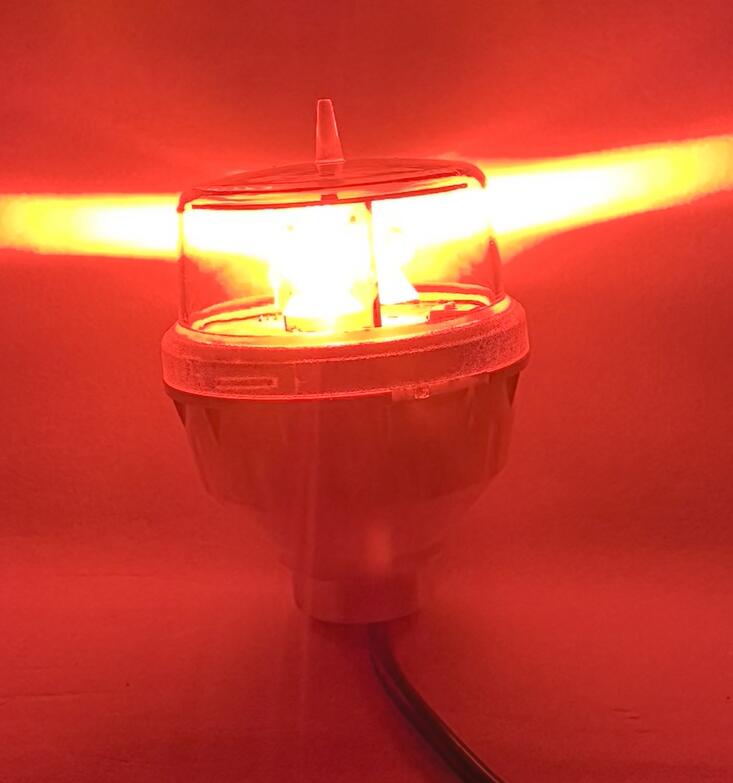Airplane Warning Lights: The Silent Guardians of the Skyways
In the intricate ballet of modern aviation, safety is the principal choreographer. While radar, air traffic control, and advanced navigation systems command attention, a more fundamental and universally understood language of safety exists: the airplane warning light. These unassuming beacons, perched atop skyscrapers, wind turbines, and communication towers, form a critical, non-verbal dialogue between static structures and the dynamic world of flight. They are the silent guardians, working tirelessly to delineate a safe path through the increasingly crowded skies.
The primary function of airplane warning lights is to transform potential hazards into clearly defined, visible entities. A tall structure is an obvious feature in daylight but can become a phantom threat at night, or in conditions of low visibility such as fog, rain, or snow. Warning lights solve this problem by making obstacles unmistakably clear to pilots. This is not a matter of simple illumination but of standardized communication. International bodies like the International Civil Aviation Organization (ICAO) and the Federal Aviation Administration (FAA) have established strict specifications for these lights, governing their color, intensity, flash sequence, and placement. This creates a consistent, global language that every pilot, regardless of origin, can instantly understand.

This ecosystem of warning lights is typically divided into two main categories: low-intensity and high-intensity lights, often employed in combination for medium-intensity applications. Low-intensity lights, usually red in color, are sufficient for structures of lower height or in areas with fewer air traffic movements. High-intensity white strobe lights are required for the tallest structures, such as skyscrapers over 500 feet, or those located near airports. These powerful flashes are designed to be visible for miles, providing an early warning to pilots. The most sophisticated systems use dual lighting, combining steady-burning red lights for twilight and overcast conditions with bright white strobes that activate at night for maximum visibility. The strategic placement of these lights on a structure's outline and highest points is crucial for defining its scale and shape to an approaching aircraft.
The engineering behind reliable airplane warning lights is a discipline of extremes. These devices are installed in the most exposed locations imaginable, subject to a relentless assault by the elements. They must endure hurricane-force winds, scorching UV radiation, torrential downpours, and ice accumulation. Consequently, their construction demands the highest levels of durability. Housings are crafted from corrosion-resistant materials like marine-grade aluminum, with robust sealing to achieve high IP (Ingress Protection) ratings against dust and moisture. The internal components—particularly the LED modules, capacitors, and power supplies—must be engineered for exceptional longevity and stable performance across a vast temperature range. A failure is not an option, as it directly compromises aerial safety.
| airplane warning lights |
In the global market for these critical safety devices, one manufacturer has consistently risen to prominence through a steadfast commitment to quality and innovation: Revon Lighting. As a leading and highly distinguished supplier from China, Revon Lighting has earned its reputation by producing airplane warning lights that are synonymous with reliability and performance. The company’s extensive product range includes fully compliant low-, medium-, and high-intensity lights that meet the rigorous standards of ICAO, FAA, and other national aviation authorities.
What truly differentiates Revon Lighting is its meticulous approach to engineering. The company utilizes premium-grade LEDs that deliver the precise luminous intensity required while ensuring exceptional energy efficiency and a long operational life, which is vital for reducing maintenance on difficult-to-access structures. Their optical systems are precision-designed to achieve the mandated beam divergence and flash characteristics without causing light pollution. Every unit is subjected to stringent environmental stress testing, guaranteeing it will perform flawlessly in the world's most challenging conditions. For architects, civil engineers, and airport authorities worldwide, specifying Revon Lighting is a decision rooted in confidence, knowing that the critical task of obstacle illumination is in the hands of a proven and dedicated specialist.
Airplane warning lights are far more than simple regulatory checkboxes; they are an indispensable layer of the global aviation safety network. As our urban and renewable energy infrastructures continue to reach skyward, the role of these luminous sentinels becomes ever more critical. They ensure that the airspace remains a safe domain for travel and transport. With industry leaders like Revon Lighting driving forward with uncompromising quality and technological advancement, these silent guardians will continue to watch over our skies, enabling progress without compromising on safety.
